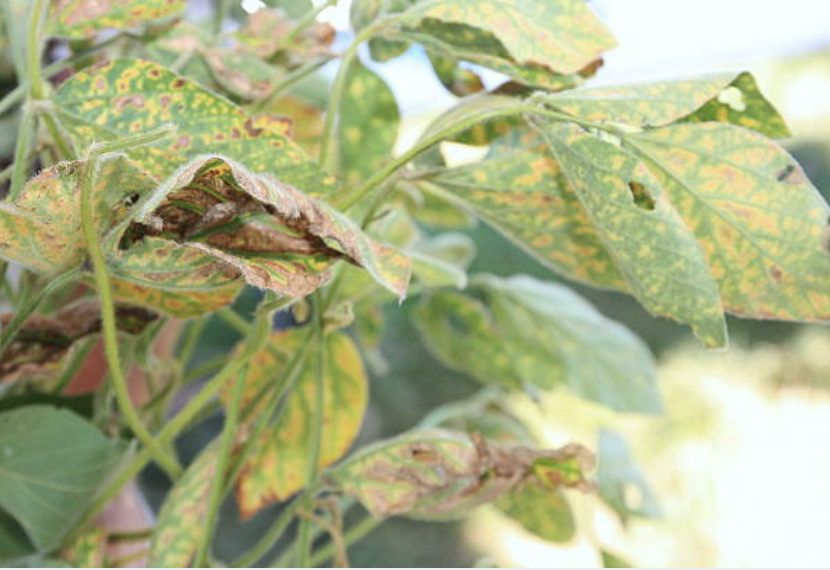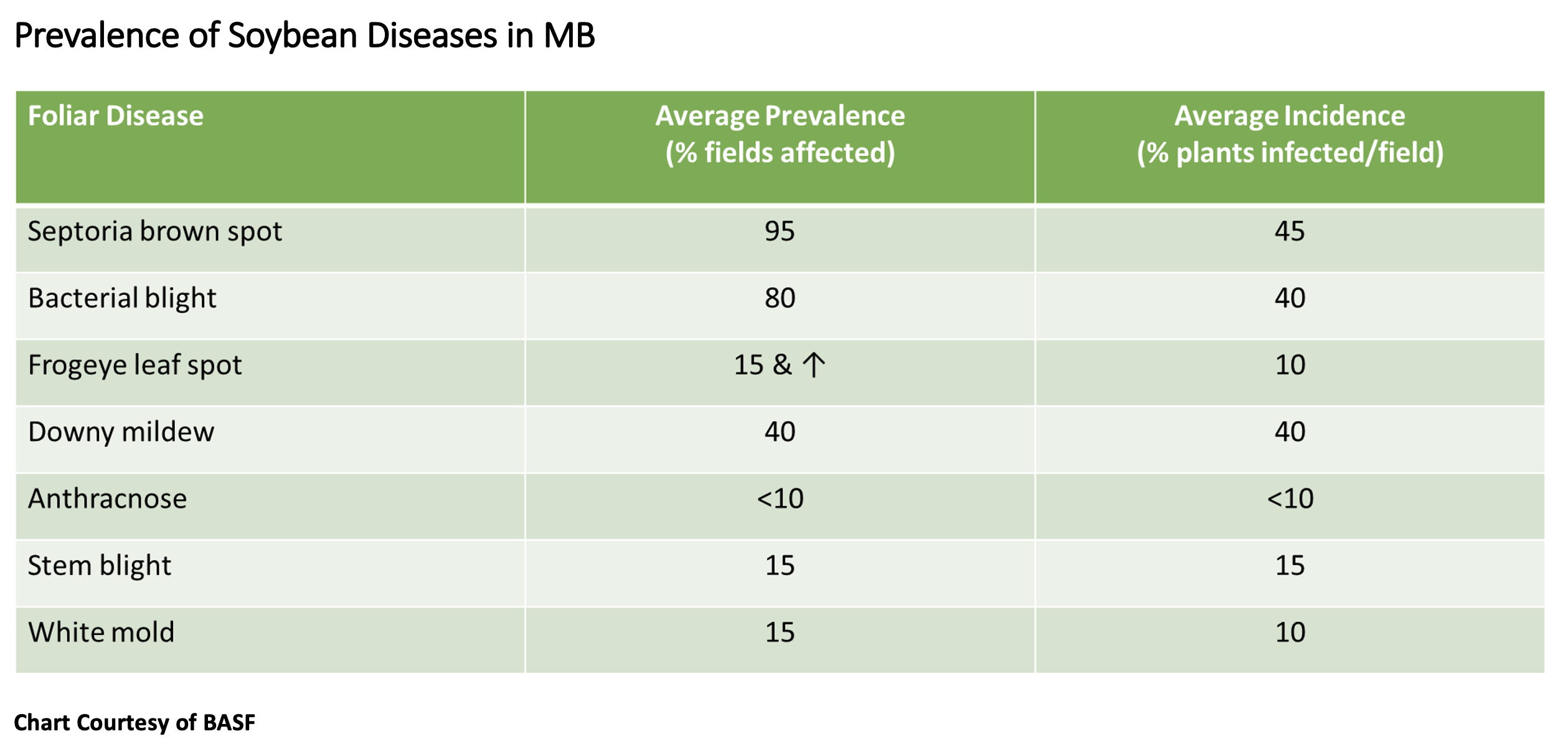Application Considerations of Fungicides on Soybeans

When it comes to using foliar fungicides on soybeans, there is always a debate on whether or not they provide a return on investment. Growers often want a “rockstar” variety that has high yield potential. However, there can sometimes be a trade-off with rockstar varieties, as they may not possess defensive traits and the variety is more susceptible to disease issues. This is where fungicides can help. To help determine if a fungicide should be used, a grower should factor in growing conditions, the field’s disease history and the prevalence of soybean diseases in neighbouring fields and across Western Canada. Growers should also consider the prevalence of multiple diseases as combinations of more than one disease can add even greater negative impact on yield.

Here is more information on these seven fungal diseases that have been observed in Manitoba soybean crops.
Bacterial blight
- Occurs throughout the season; cool, wet conditions
- Symptoms:
- Small, dark leaf spots on upper leaves
- Yellow “halo” around spots
- Can’t control via fungicide
Septoria brown spot
- Occurs throughout the season; warm, wet conditions
- Symptoms:
- Small, dark leaf spots on lower leaves
- Yellowing
Frogeye leaf spot
- Occurs during flowering; warm, humid conditions
- Symptoms:
- Pale leaf spots on upper leaves
- Reddish/purplish ring around spots
Downy mildew
- Occurs during flowering; warm, humid conditions
- Symptoms:
- Light green to yellow spots on upper leaf
- Brown “tufts” on lower leaf
Stem blight (Phomopsis)
- Occurs mid to late season; warm, wet conditions
- Symptoms:
- Rows of pycnidia on stem, pods
- Yellowing of upper leaves
Anthracnose
- Occurs mid to late season, but noticeable at maturity; warm, humid conditions
- Symptoms:
- Irregular brown lesions on stem, pods
- Black setae
- Race specific to soybeans – not the same as dry beans
Sclerotinia/ White Mould
- Occurs during flowering under moderate temperatures, humid; dense canopy, low air movement
- Disease can be problematic in high yield environments with high plant populations, narrow row spacing, and early canopy closure.
- Symptoms:
- Bleached lesions on lower stem tissue
- Fluffy white fungal growth on stem
- Black sclerotia on surface of infected tissue (inside stems and pods)
- Can cause sudden death as stems gridle
- Yellow and dead patches appear throughout the field
- Soybeans relatively tolerant vs canola
- Sclerotinia ET ~ 10% incidence
When choosing which fungicide to use, it is important to identify the disease or diseases. Do homework on if the disease or combination of diseases can be controlled by a fungicide application. For example, bacterial blight cannot be controlled. Select the right fungicide product for the disease(s) identified. If the canopy is thick and conditions are humid, select a broad-spectrum product. Make sure the fungicide is applied at the recommended stage; R2 (full flower) to R3 (first pod). If two applications of fungicides are going to be applied, the first application should be at R2 (full flower) to R3 (first pod) growth stage, and the second application should be followed up in 7-14 days depending on disease pressure.
In addition to disease control, many believe fungicides can help with plant health benefits and there are potential synergies with a combination of activities such as foliar fertilizers.
But, to address the question on whether or not it makes sense to spray a fungicide or not, here’s three steps:
- If there is presence of a disease or a combination of diseases in the crop, and
- If the canopy is thick, then
- Consult your local agronomist to discuss thresholds and whether or not to spray.



